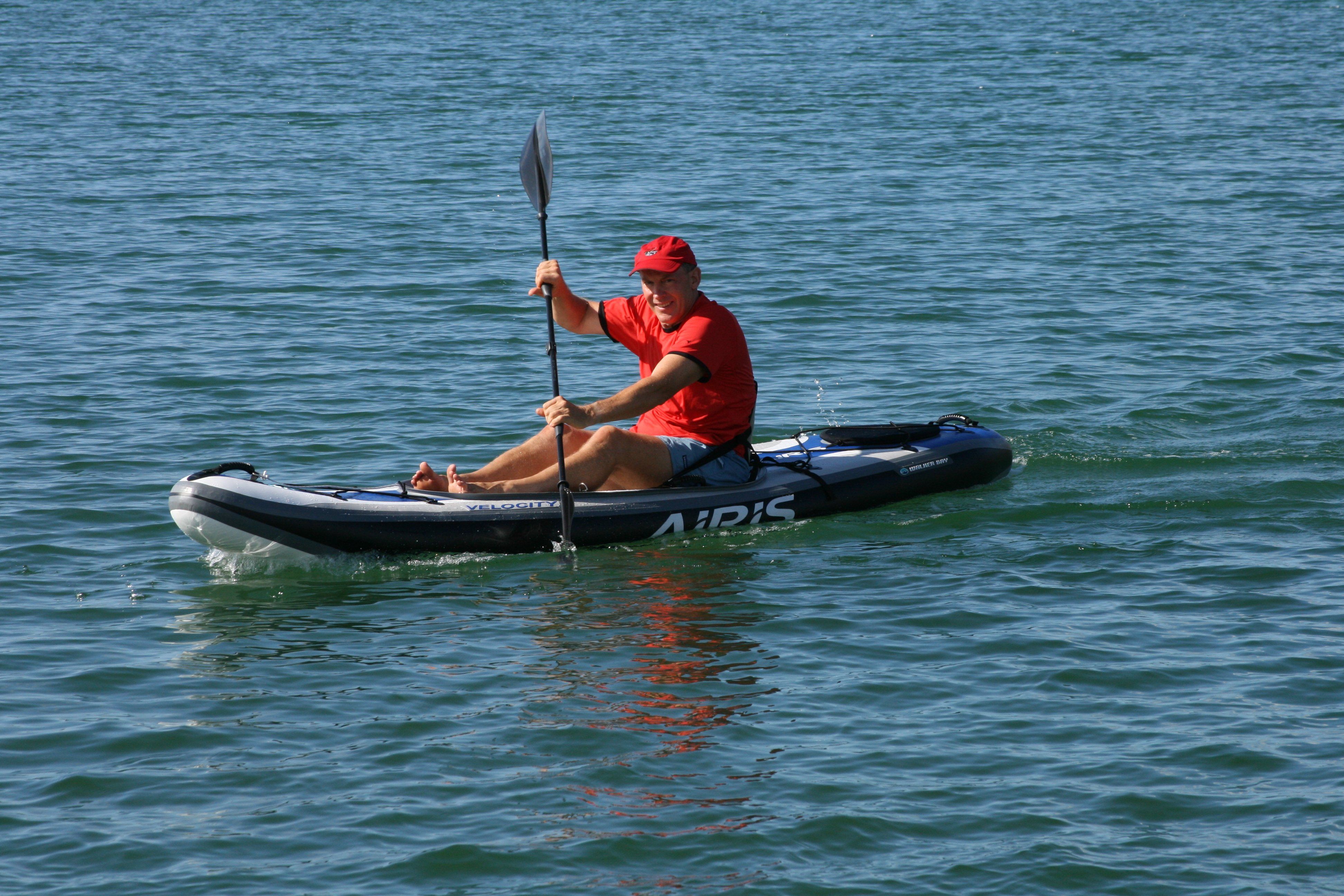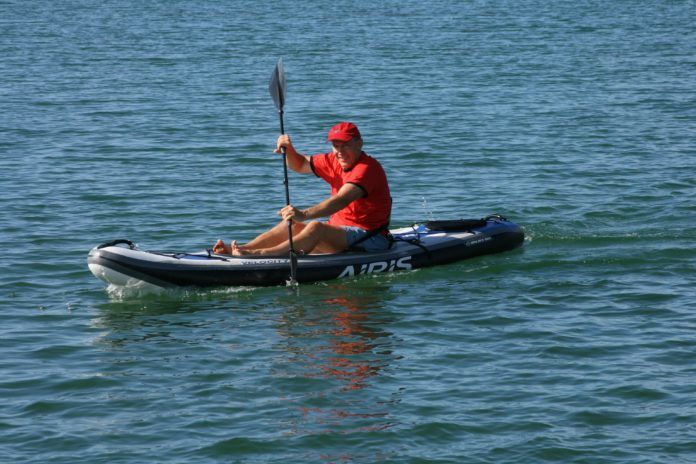A paddle should be selected with the same care you buy a shoe, since it is your connection to the water. For long-term cruising a spare may be good idea. A good economical choice is the Aquabound Manta Ray Fiberglass (about $100).
Walker Bays two-piece aluminum paddle is a little heavier than fiberglass and carbon paddles, but the blades are very nicely shaped and it proved white-water durable in extended testing. The paddles are only feathered (offset) in two positions 0- and 60-degree feather only. The Hobie paddles had an inefficient flat shape and a jarring entry. Sea Eagle and Sterns paddles are similarly bulky. Wilderness Systems, Ocean Kayak, and Perception expect you to buy the paddle separately.

To Feather or Not to Feather
Common sense suggests the blades should be aligned. Most whitewater paddlers prefer them this way, because it is simpler to keep track of the blade rotation when paddling furiously, making quick adjustments, and doing an Eskimo roll. But for flat-water kayaking, an offset (feather) of 30-60 degrees makes paddling easier on the wrists and more efficient into the wind.
First, hold the paddle in the position you will stroke on the side of your dominant hand, keeping both wrists in comfortable, neutral position. Notice that the upper hand is rotated about 45 degrees clockwise (if you are right handed) from the lower hand. This is the amount of feather you want. Adjust the upper blade that amount, but in the opposite direction.
When you paddle, hold the shaft with the dominant hand (control hand), allowing the paddle to rotate in your non-dominant hand as the paddle crosses over and stokes on the opposite side. The paddle will rotate about 45 degrees in your hand and the blade on the non-dominant hand will magically enter the water at the correct angle.
While this may seem a little complicated at first, efficiency is improved and your wrists will thank you. Gloves also help, either light coated gloves or your sailing gloves.




































